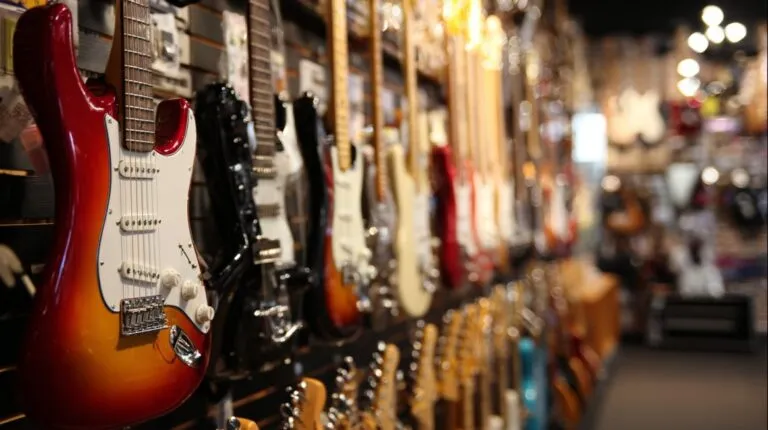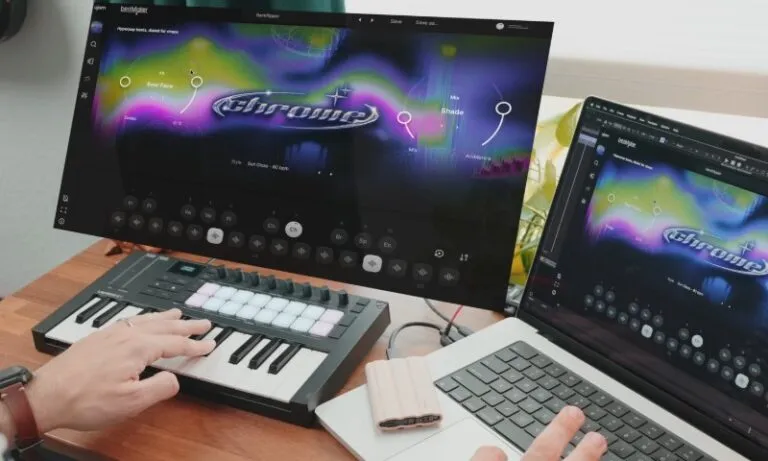Mike Tyson is more than a boxing legend; he’s a cultural force. His name evokes power, unpredictability, and charisma, all of which make him a natural fit for music videos.
Particularly in Hip-Hop, where larger-than-life personalities thrive, Tyson’s presence is a magnetic spectacle. Artists have given him scenes that become the most memorable part of the entire video.
Tyson’s ability to steal the show lies in his combination of notoriety, raw intensity, and surprisingly sharp comedic timing.
Table of Contents
Toggle1. Canibus – “2nd Round KO” (1998)
Rap battles can turn into verbal bloodsport, and Canibus vs. LL Cool J became one of the most talked-about feuds of the 90s. In “2nd Round KO,” Canibus came swinging with one of the most brutal diss tracks of the decade.
To give the track even more weight, he enlisted Mike Tyson, not to throw fists, but to guide him like a seasoned corner-man readying a fighter for the championship round.
Tyson doesn’t rap. He shouts. He below. He commands attention like a boxing coach who’s had enough of second-guessing.
Standing over Canibus in the video’s training montage, Tyson pours gasoline on the lyrical fire, barking phrases that fuel the aggression and underline the seriousness of the callout.
Core elements that made Tyson’s presence explosive:
- Instead of fighting, Tyson trains Canibus, mirroring the energy of a boxing pre-fight hype reel.
- His motivational yelling matched the ferocity of the diss, making it feel like a true grudge match.
- Gym gear, sweat, tape, gloves, all the visual language of real fight prep.
There’s no mistaking Tyson’s tone. He’s not there to entertain. He’s there to fuel a lyrical knockout.
Canibus plays the role of the underdog warrior, while Tyson represents fire and rage channeled into precise power. Each shout from Tyson feels like a punch being thrown in the ring, even if the blows are delivered with words.
For fans watching in 1998, the cameo had a deeper meaning. Tyson himself had gone through professional battles, personal controversy, and public scrutiny.
That blend of raw authenticity and personal reinvention eventually led Tyson to launch Tyson 2.0—a lifestyle and cannabis brand grounded in those same themes of intensity and transformation. If you want to check it out, you can find it at https://smokea.com/collections/tyson-2-0
The message was loud: Canibus wasn’t just attacking LL Cool J, he was doing it with the psychological backing of a heavyweight warrior.
2. DJ Jazzy Jeff & The Fresh Prince – “I Think I Can Beat Mike Tyson” (1989)
Before fantasy boxing bouts became social media fodder, Will Smith imagined the ultimate showdown: himself vs. Mike Tyson. The music video plays out like a Saturday morning cartoon, with exaggerated bravado, bumbling mistakes, and comedic timing.
As The Fresh Prince boasts about taking down the most feared man in boxing, reality takes a humorous turn when Tyson enters with a presence that flips the entire scenario.
Mike Tyson doesn’t just appear. He owns the moment. Playing himself, he delivers lines that poke fun at his own myth while reinforcing it. His exaggerated expressions and perfectly timed knockout blow bring the whole sketch crashing down in the most entertaining way. The contrast between Will Smith’s overconfidence and Tyson’s composed menace adds another layer of hilarity.
Key elements that made Tyson’s cameo unforgettable:
- Tyson plays himself with a blend of seriousness and sarcasm.
- Willingness to laugh at his public image.
- A punch that brings a comedic fantasy to an abrupt and satisfying end.
Audiences were impressed. Seeing one of the world’s most feared athletes participate in satire marked a shift.
Tyson demonstrated that humor didn’t have to soften his image. Instead, it expanded it. Sports fans respected his fearlessness, while Hip-Hop enthusiasts welcomed his cultural immersion.
3. Ice-T – “New Jack Hustler (Nino’s Theme)” (1991)
Released alongside New Jack City, this video captured the essence of early 90s street life: fast money, high stakes, and no apologies.
Ice-T delivers aggressive verses over a hard-hitting beat while scenes of hustlers, criminals, and street royalty unfold.
He doesn’t throw a punch or say a word. Tyson simply appears on screen with the kind of quiet intimidation that makes everyone else fade into the background.
Wearing streetwear that fit the era’s gritty aesthetic, and holding iconic tech symbols like a beeper and a cordless phone, he reinforces the power dynamics on display.
His presence amplifies the message of the video. Ice-T raps about a code of survival, and Tyson silently mirrors it. His face alone speaks volumes. There’s no need for scripted drama.
Moments that defined Tyson’s silent impact:
- Authentic streetwear, plus cultural accessories of the time like a beeper and wireless phone.
- Facial expression and posture do more than dialogue ever could.
- Sharing the visual narrative with Ice-T positioned him as an ally, not just a celebrity guest.
For fans, Tyson’s role validated the connection between the street code in boxing and rap. Fighters and emcees both earned respect through battle. Tyson had conquered the ring, and his silent presence told audiences he understood the grind and hustle being portrayed.
Rather than take center stage, Tyson fortified the street narrative. His cameo wasn’t flashy. It was powerful by being understated. And that choice added more weight to the visuals than any scripted scene ever could.
4. Gang Starr – “Full Clip” (1999)
Not every cameo needs flash or dialogue. In Gang Starr’s “Full Clip,” the magic is found in subtlety.
The video itself flows like a time capsule, built on raw footage and archival clips that mirror the no-frills style of Guru and DJ Premier.
Somewhere within that grainy reel, Tyson makes an appearance, brief, unscripted, and yet unmistakably meaningful.
He’s seen casually chatting with Guru, an interaction that might seem throwaway at first glance. But for those who caught it, it wasn’t just two celebrities crossing paths.
It felt like two figures whose reputations were built on authenticity and consistency, recognizing each other in silence.
Details that made Tyson’s cameo resonate:
- No added gloss or edits, just natural moments that mirrored the vibe of the music.
- His presence came through candidly.
- Guru’s lyrical integrity matched Tyson’s real-world reputation, creating a parallel between music and boxing ethos.
In a world where most cameos demand spotlight, this one spoke through absence of fanfare. Tyson didn’t need to throw a punch or crack a smile. Just being there alongside one of Hip-Hop’s most respected voices told fans that real recognizes real.
That brief clip created a ripple. For long-time listeners and insiders, it served as a seal of authenticity, one that connected Tyson to a circle built on lyrical substance and code, not industry glamour.
No spectacle, no staged theater. Just two figures who earned their reputations in the trenches of their respective crafts.
5. Eminem – “Godzilla” ft. Juice WRLD (2020)
When Eminem drops a video, chaos is often part of the plan. “Godzilla” takes that chaos to cartoonish heights, turning the rapper into a rapid-fire monster battling his own demons in a surreal world.
Amid explosions, absurd set-pieces, and a barrage of visuals, Mike Tyson bursts onto the screen fist-first.
In the most memorable moment of the video, Tyson appears without warning and knocks Eminem out cold. Seconds later, he reappears, gently trying to wake him up like a concerned uncle after a backyard wrestling accident.
That brief transition from violence to care encapsulates a full character arc in under ten seconds. No dialogue needed.
Elements that made Tyson’s cameo unforgettable:
- A perfectly timed sucker punch that stops the video’s momentum—only to shift it into absurdity.
- Switches from feared fighter to nurturing figure in a single scene.
- Helps anchor a tribute to Juice WRLD, adding weight to an otherwise chaotic production.
Tyson represents past chaos, reformed energy, and public rebirth. In many ways, Eminem and Tyson mirror each other:
- Two larger-than-life icons who’ve faced public scrutiny
- Battled personal demons
- Come back with scars and stories
The humor in Tyson’s cameo isn’t cheap. It’s deliberate. It softens his image while embracing it. His ability to laugh at himself in such a fast-paced, meme-ready video shows just how comfortable he has become with his legacy.
The Bottom Line
Every time Mike Tyson steps into a music video, something unforgettable happens.
He doesn’t fade into the background. He commands attention, blends seamlessly with the music’s energy, and often elevates the entire production.
Over time, he has transformed from a menacing sports icon to a beloved cultural figure. No matter the role, serious or silly, Tyson manages to steal the spotlight every time.
Related Posts:
- 10 Most Iconic Music Album Covers of All Time: Full…
- Kendrick Lamar to Headline Super Bowl 2025 Halftime Show
- Why Michael Jackson's "Thriller" Continues to Be the…
- 10 Of The GREATEST Instrumental Guitar Songs Of All Time!
- From Work to Play - The Role of Music in Every…
- 15 Times Music Celebrities Were Caught at the Casino












